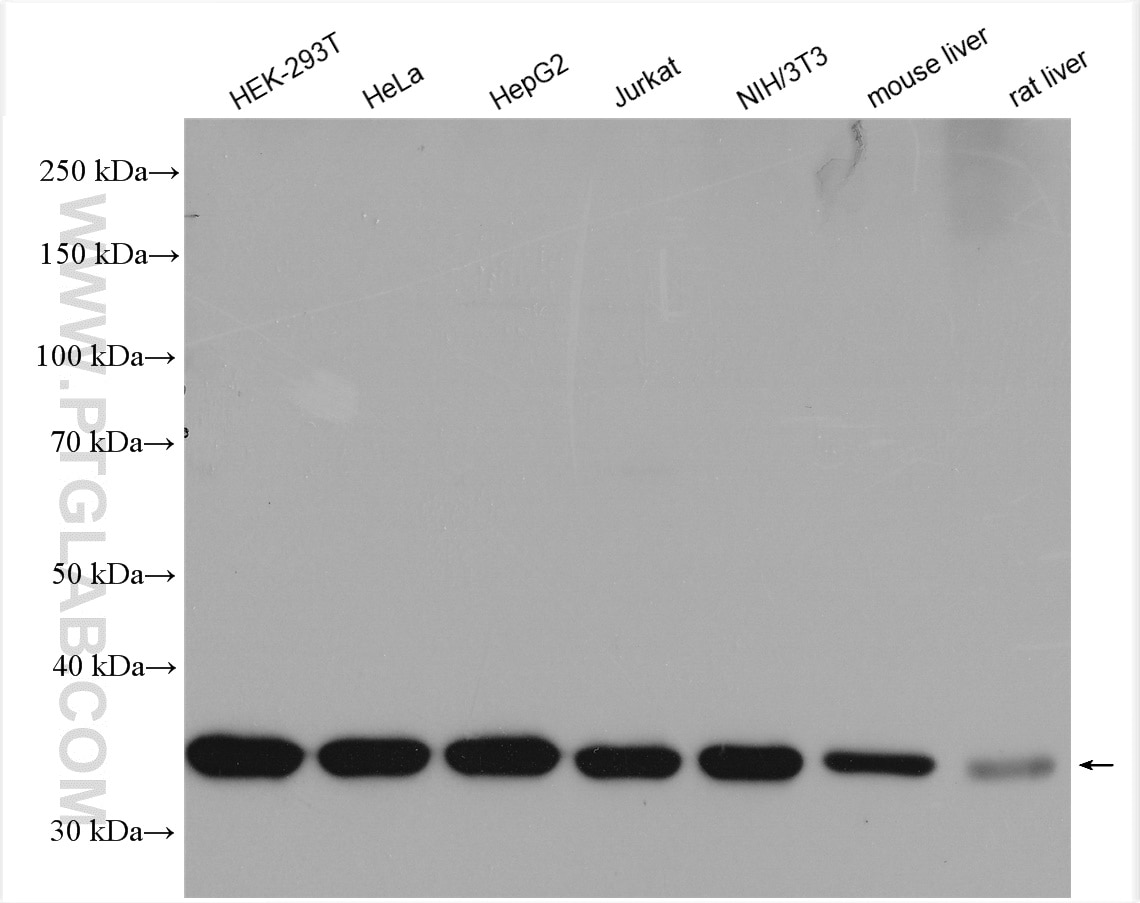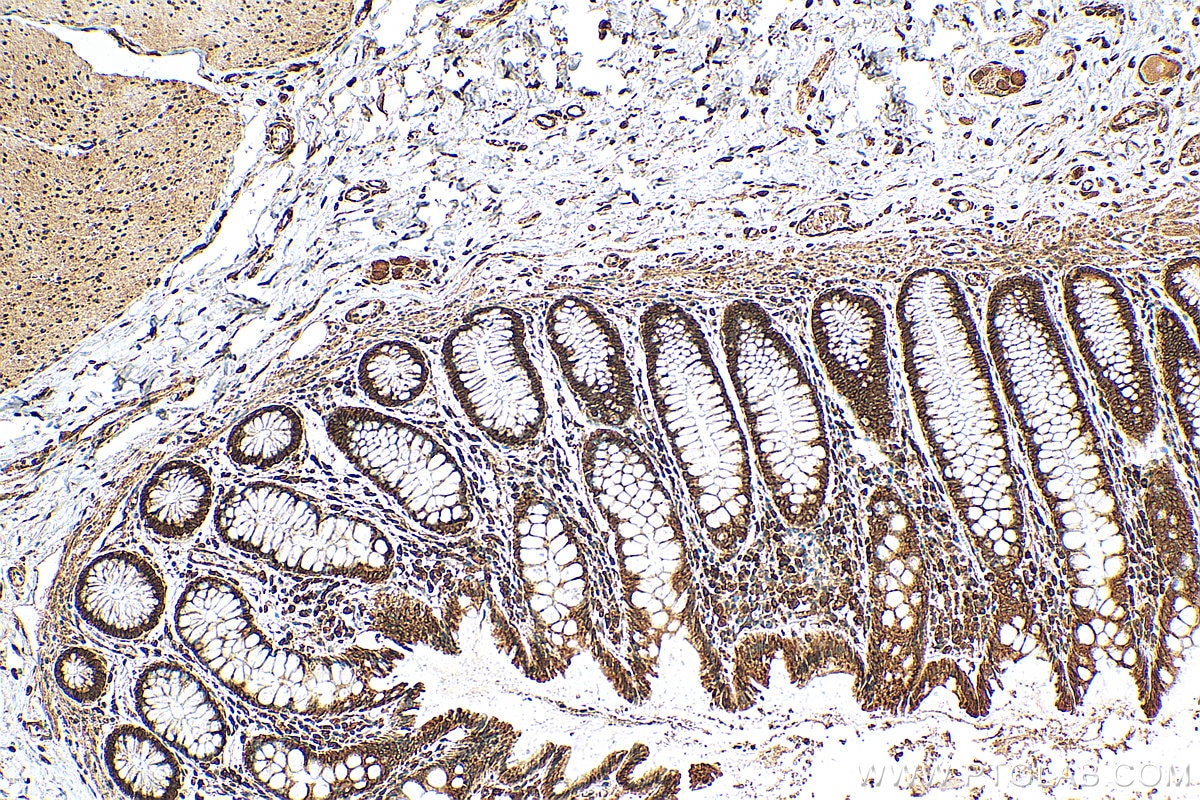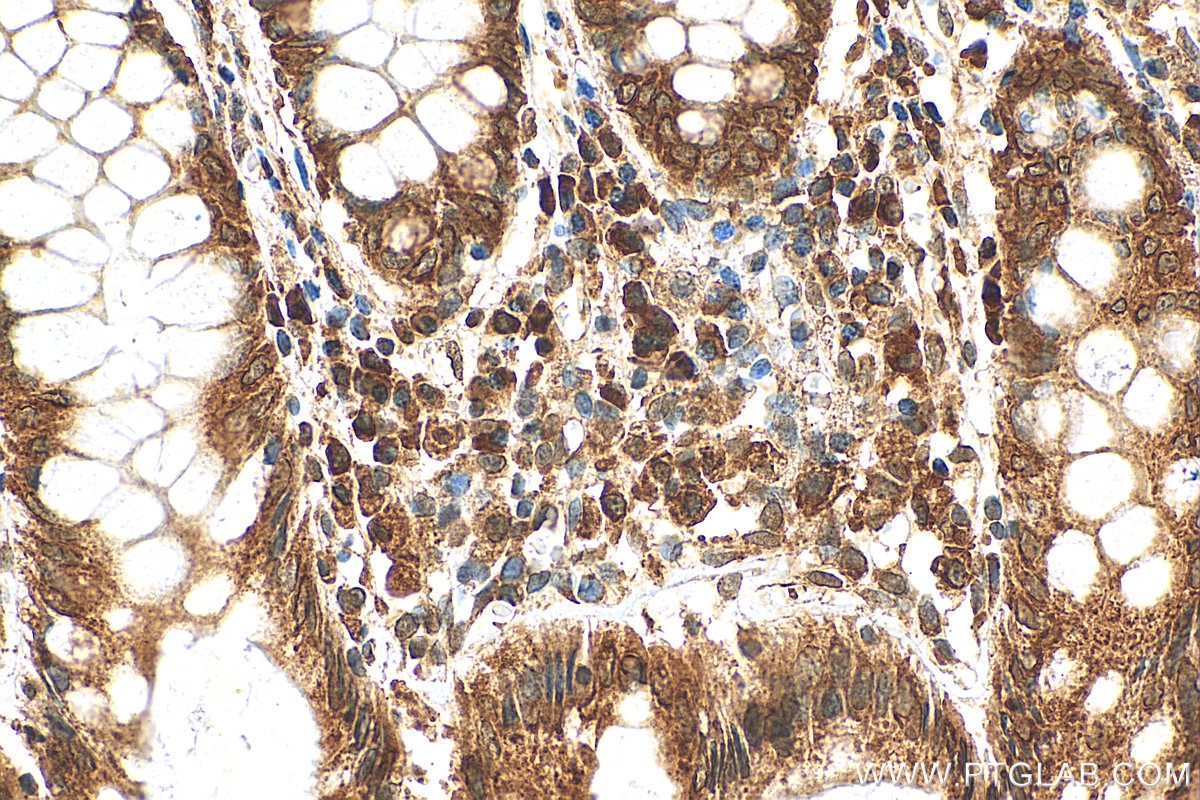Tested Applications
| Positive WB detected in | HEK-293T cells, HeLa cells, HepG2 cells, Jurkat cells, NIH/3T3 cells, mouse liver tissue, rat liver tissue |
| Positive IHC detected in | human colon tissue Note: suggested antigen retrieval with TE buffer pH 9.0; (*) Alternatively, antigen retrieval may be performed with citrate buffer pH 6.0 |
Recommended dilution
| Application | Dilution |
|---|---|
| Western Blot (WB) | WB : 1:5000-1:50000 |
| Immunohistochemistry (IHC) | IHC : 1:50-1:500 |
| It is recommended that this reagent should be titrated in each testing system to obtain optimal results. | |
| Sample-dependent, Check data in validation data gallery. | |
Published Applications
| WB | See 1 publications below |
Product Information
27208-1-AP targets LRRC59 in WB, IHC, ELISA applications and shows reactivity with human, mouse, rat samples.
| Tested Reactivity | human, mouse, rat |
| Cited Reactivity | mouse |
| Host / Isotype | Rabbit / IgG |
| Class | Polyclonal |
| Type | Antibody |
| Immunogen | LRRC59 fusion protein Ag26090 Predict reactive species |
| Full Name | leucine rich repeat containing 59 |
| Calculated Molecular Weight | 307 aa, 35 kDa |
| Observed Molecular Weight | 35-45 kDa |
| GenBank Accession Number | BC052279 |
| Gene Symbol | LRRC59 |
| Gene ID (NCBI) | 55379 |
| RRID | AB_2880801 |
| Conjugate | Unconjugated |
| Form | Liquid |
| Purification Method | Antigen affinity purification |
| UNIPROT ID | Q96AG4 |
| Storage Buffer | PBS with 0.02% sodium azide and 50% glycerol , pH 7.3 |
| Storage Conditions | Store at -20°C. Stable for one year after shipment. Aliquoting is unnecessary for -20oC storage. 20ul sizes contain 0.1% BSA. |
Protocols
| Product Specific Protocols | |
|---|---|
| WB protocol for LRRC59 antibody 27208-1-AP | Download protocol |
| IHC protocol for LRRC59 antibody 27208-1-AP | Download protocol |
| Standard Protocols | |
|---|---|
| Click here to view our Standard Protocols |
Publications
| Species | Application | Title |
|---|---|---|
Nat Commun OrthoID: profiling dynamic proteomes through time and space using mutually orthogonal chemical tools |







